WAY TOO FUNNY!!!ACTUAL exchanges between pilots and control towers>
>
>
> Tower : 'Delta 351, you have traffic at 10 o'clock, 6 miles!'
>
> Delta 351 : 'Give us another hint! We have digital watches!'
>
>
>
>
****************************************************************************
> **********************
>
> Tower : 'TWA 2341, for noise abatement turn right 45 Degrees.'
>
> TWA 2341 : 'Center, we are at 35,000 feet. How much noise can we make up
> here?'
>
> Tower : 'Sir, have you ever heard the noise a 747 makes when it hits a
> 727?'
>
>
>
>
****************************************************************************
> ************************
>
> From an unknown aircraft waiting in a very long takeoff queue: 'I'm
f...ing
> bored!'
>
> Ground Traffic Control : 'Last aircraft transmitting, identify yourself
> immediately!'
>
> Unknown aircraft : 'I said I was f...ing bored, not f...ing stupid!'
>
>
>
>
****************************************************************************
> **********************
>
> O'Hare Approach Control to a 747 : 'United 329 heavy, your traffic is a
> Fokker, one o'clock, three miles, Eastbound.'
>
> United 329 : 'Approach, I've always wanted to say this..I've got the
little
> Fokker in sight.'
>
>
>
>
****************************************************************************
> ************************
>
> A student became lost during a solo cross-country flight.. While
attempting
> to locate the aircraft on radar, ATC asked , 'What was your last known
> position?'
>
> Student : 'When I was number one for takeoff..'
>
>
>
>
****************************************************************************
> ***********************
>
>
>
> A DC-10 had come in a little hot and thus had an exceedingly long roll out
> after touching down.
>
> San Jose Tower Noted : 'American 751, make a hard right turn at the end
of
> the runway, if you are able. If you are not able, take the Guadeloupe exit
> off Highway 101, make a right at the lights and return to the airport.'
>
>
>
>
****************************************************************************
> ************************
>
> A Pan Am 727 flight, waiting for start clearance in Munich , overheard the
> following:
>
> Lufthansa (in German): ' Ground, what is our start clearance time?'
>
> Ground (in English): 'If you want an answer you must speak in English.'
>
> Lufthansa (in English): 'I am a German, flying a German airplane, in
Germany
> . Why must I speak English?'
>
> Unknown voice from another plane (in a beautiful British accent):
'Because
> you lost the bloody war!'
>
>
>
>
****************************************************************************
> ************************
>
>
>
> Tower : 'Eastern 702, cleared for takeoff, contact Departure on frequency
> 1247'
>
> Eastern 702 : 'Tower, Eastern 702 switching to Departure. By the way,
after
> we lifted off we saw some kind of dead animal on the far end of the
runway.'
>
>
> Tower : 'Continental 635, cleared for takeoff behind Eastern 702, contact
> Departure on frequency 124.7. Did you copy that report from Eastern 702?'
>
> BR Continental 635 : 'Continental 635, cleared for takeoff, roger; and
yes,
> we copied Eastern... we've already notified our caterers.'
>
>
>
>
****************************************************************************
> ************************
>
>
>
> One day the pilot of a Cherokee 180 was told by the tower to hold short of
> the active runway while a DC-8 landed. The DC-8 landed, rolled out, turned
> around, and taxied back past the Cherokee. Some quick-witted comedian in
the
> DC-8 crew got on the radio and said, 'What a cute little plane. Did you
> make it all by yourself?'
>
> The Cherokee pilot, not about to let the insult go by, came back with a
real
> zinger: 'I made it out of DC-8 parts. Another landing like yours and I'll
> have enough parts for another one.'
>
>
>
>
****************************************************************************
> ************************
>
>
>
> The German air controllers at Frankfurt Airport are renowned as a
> short-tempered lot. They not only expect one to know one's gate parking
> location, but how to get there without any assistance from them. So it was
> with some amusement that we (a Pan Am 747) listened to the following
> exchange between Frankfurt ground control and a British Airways 747, call
> sign Speedbird 206..
>
> Speedbird 206 : ' Frankfurt , Speedbird 206! clear of active runway.'
>
> Ground : 'Speedbird 206. Taxi to gate Alpha One-Seven.'
>
> The BA 747 pulled onto the main taxiway and slowed to a stop.
>
> Ground : 'Speedbird, do you not know where you are going?'
>
> Speedbird 206 : 'Stand by, Ground, I'm looking up our gate location
now.' !
>
>
> Ground (with quite arrogant impatience): 'Speedbird 206, have you not
been
> to Frankfurt before?'
>
> Speedbird 206 (coolly): 'Yes, twice in 1944, but it was dark, -- And I
> didn't land.'
>
>
>
>
****************************************************************************
> ********************* While taxiing at London 's Gatwick Airport , the
crew
> of a US Air flight departing for Ft. Lauderdale made a wrong turn and came
> nose to nose with a United 727. An irate female ground controller lashed
out
> at the US Air crew, screaming:
>
> 'US Air 2771, where the hell are you going? I told you to turn right onto
> Charlie taxiway! You turned right on Delta! Stop right there. I know it's
> difficult for you to tell the difference between C and D, but get it
right!'
>
>
> Continuing her rage to the embarrassed crew, she was now shouting
> hysterically:
>
> 'God! Now you've screwed everything up! It'll take forever to sort this
out!
> You stay right there and don't move till I tell you to! You can expect
> progressive taxi instructions in about half an hour, and I want you to go
> exactly where I tell you, when I tell you, and how I tell you! You got
that,
> US Air 2771?'
>
> 'Yes, ma'am,' the humbled crew responded.
>
> Naturally, the ground control communications frequency fell terribly
silent
> after the verbal bashing of US Air 2771. Nobody wanted to chance engaging
> the irate ground controller in her current state of mind. Tension in every
> cockpit out around Gatwick was definitely running high. Just then an
unknown
> pilot broke the silence and keyed his microphone, asking: 'Wasn't I
married
> to you once?'
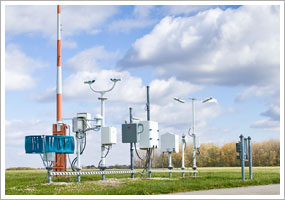 Technology has brought an enormous increase in the amount of information—especially weather information—at a pilot's fingertips. During the preflight briefing, you can study conditions at multiple reporting points, thanks to automated surface observation systems (ASOSs) and automated weather observation systems (AWOSs) at many airports. And those same systems are there to help you plan your arrival at many destinations. Include monitoring the station's report on your list of arrival duties before you contact the tower or request an airport advisory at nontowered airports.
Technology has brought an enormous increase in the amount of information—especially weather information—at a pilot's fingertips. During the preflight briefing, you can study conditions at multiple reporting points, thanks to automated surface observation systems (ASOSs) and automated weather observation systems (AWOSs) at many airports. And those same systems are there to help you plan your arrival at many destinations. Include monitoring the station's report on your list of arrival duties before you contact the tower or request an airport advisory at nontowered airports.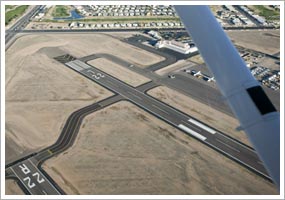
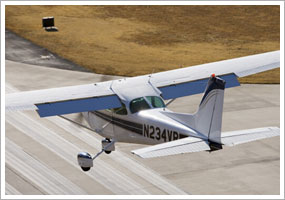
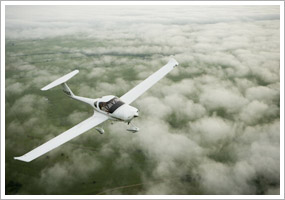
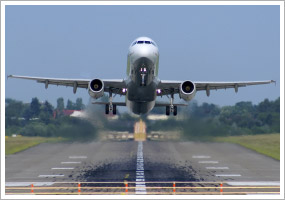
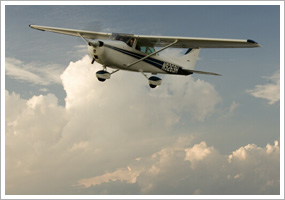
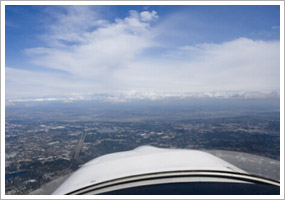
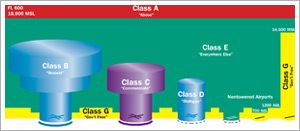
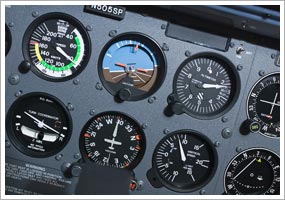

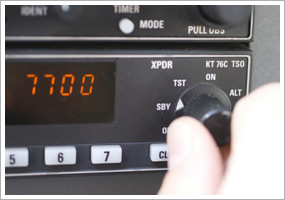
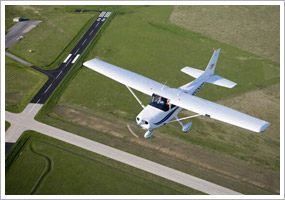 Whether heading out to fly, or returning to land, one bit of information every pilot needs is an answer to the question, "What's the active runway?" At towered airports you'll get the answer on the automated weather recording or when ATC replies to your call-up with instructions: "Taxi to Runway 33." At nontowered airports, procedures are less formal, but usually the correct course of action is clear. Automated weather will provide surface winds. The fixed-base operator may respond to your request for an airport advisory with runway information. Or monitoring the common traffic advisory frequency may reveal which runway is "active."
Whether heading out to fly, or returning to land, one bit of information every pilot needs is an answer to the question, "What's the active runway?" At towered airports you'll get the answer on the automated weather recording or when ATC replies to your call-up with instructions: "Taxi to Runway 33." At nontowered airports, procedures are less formal, but usually the correct course of action is clear. Automated weather will provide surface winds. The fixed-base operator may respond to your request for an airport advisory with runway information. Or monitoring the common traffic advisory frequency may reveal which runway is "active."
